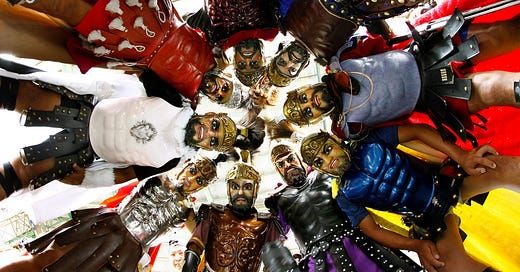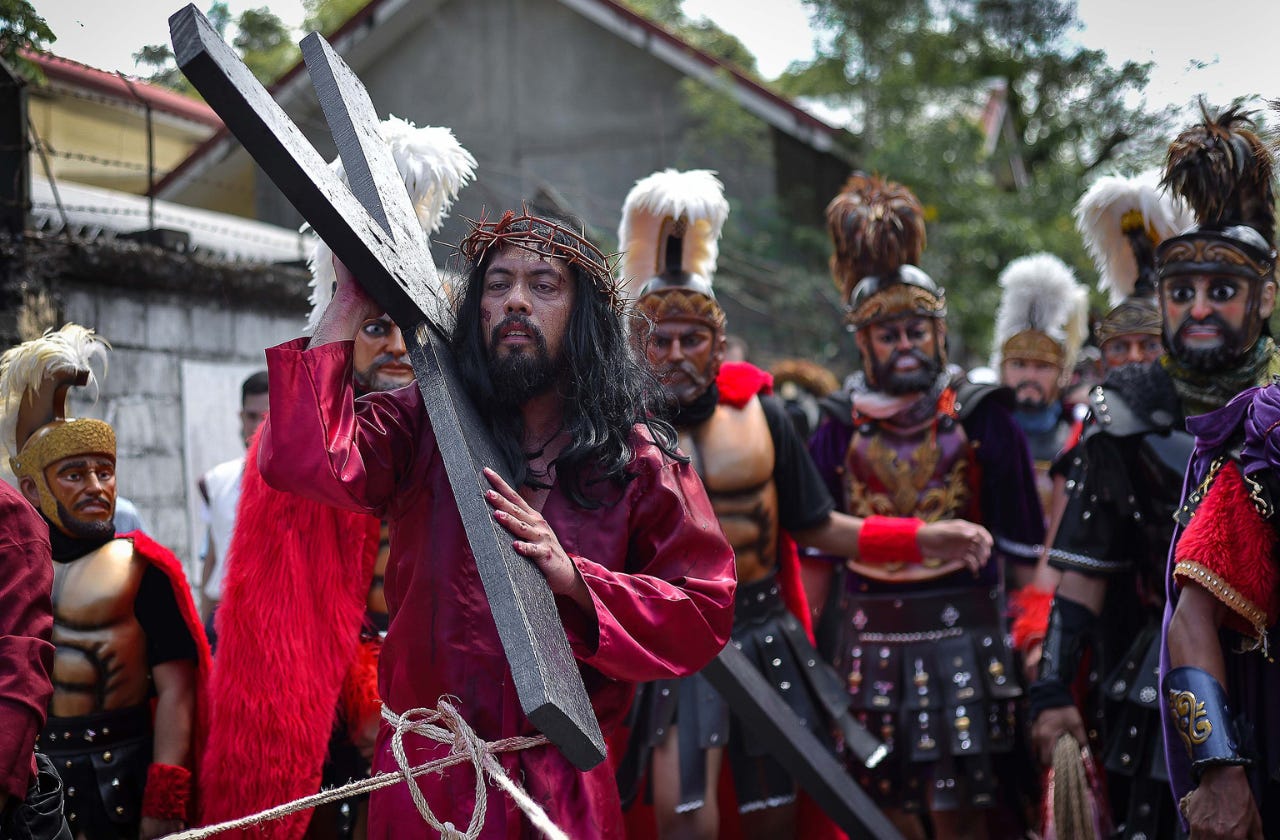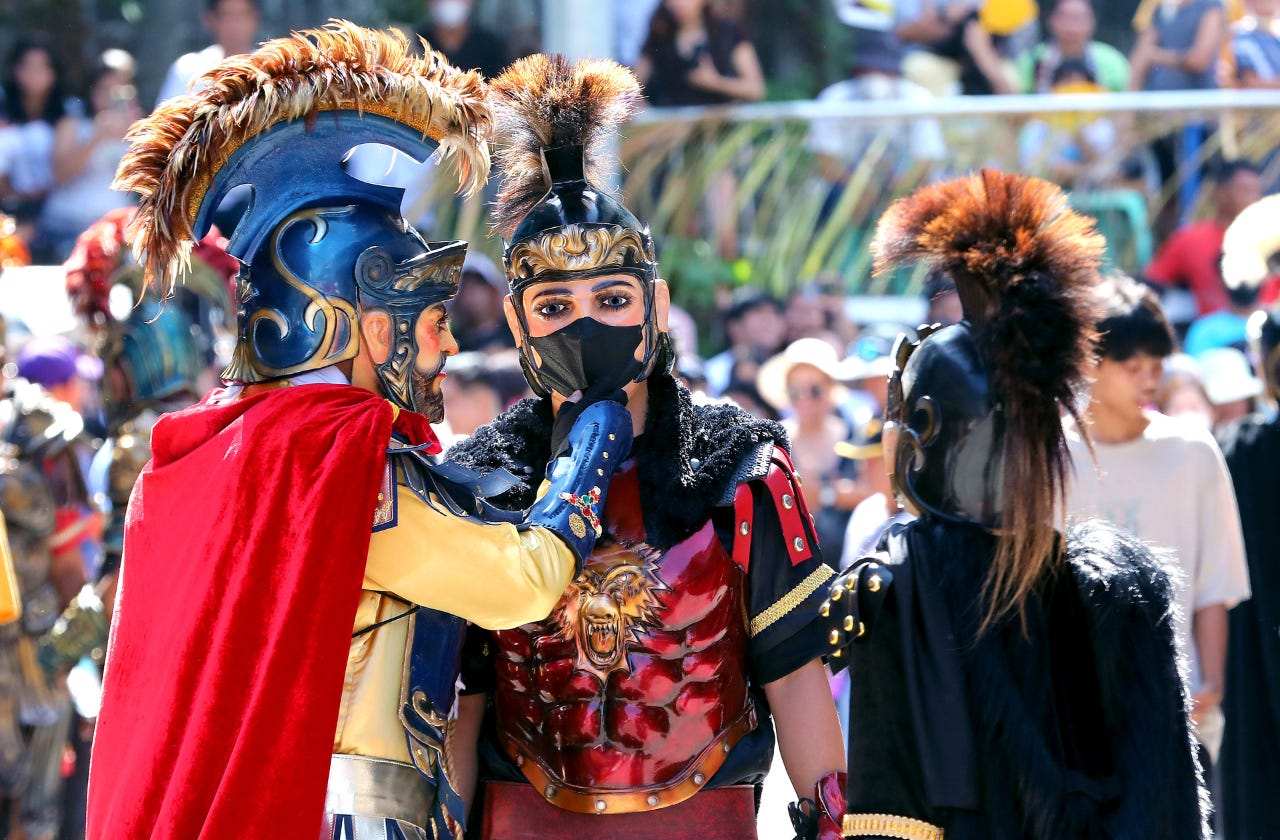The Moriones Festival of Marinduque: A Grand Holy Week Spectacle
Marinduque’s vibrant take on faith and folklore.
Every Holy Week, the beautiful island province of Marinduque in the Philippines turns into a spectacular stage for one of the country's most lively and visually stunning events: the Moriones Festival. This week-long celebration is a delightful blend of devotion, artistry, and tradition, enchanting both locals and visitors with its vibrant masks, intricate costumes, and dramatic reenactments that vividly bring biblical stories to life.
Meet the Morions
“Morions” are the main characters of the festival and they’re the visuals that bring the festival to life. They are played by men and women who are dressed up as Roman soldiers, with costumes showcasing tunics, breastplates and helmets that are intricately designed, paired with the most intimidating masks you can find.
The term “Moriones” comes from the word “morrion”, a Spanish word that refers to a type of helmet worn during the 16th to 17th century. The helmets that the Morions wear in the festival try to mimic the old design.
As they march through the streets, the Morions perform playfully for the crowd’s benefit while balancing the roles of serious Roman soldiers and diligent enforcers. The air buzzes with electric energy, filled with the noise of drums and chants heightened by the occasional mock sword duel that adds to the excitement.
Watching the Morions march together, their masks hand-painted with emotive and sometimes cartoon-like expressions, creates an arresting mix of solemnity and jubilation.
The Story of Longinus
The Moriones Festival is unique in a sense that its origin can be traced back to its religious heritage. Its existence is inherently linked to the Passion of Christ, particularly focusing on the story of Longinus, the blind Roman centurion. As the tale goes, Longinus regained his eyesight after some of the blood from Jesus’s side - pierced by Longinus with his spear during Christ’s crucifixion – fell into his eye.
During the seven day festival that runs from Holy Monday to Easter Sunday, the Morions roam the streets in search for Longinus, scaring the kids along the way or engaging in antics to command attention. This “search” happens in several towns throughout Marinduque, with Boac, Gasan, Santa Cruz, Buenavista and Mogpog taking centerstage.
In addition, local performers reenact scenes from the Passion of Christ in heartfelt and vibrant street plays. All of these activities set the stage for the dramatic beheading of Longinus, a highlight that attracts one of the largest audiences of the festival.
Panata and Devotion
The Moriones Festival is a reflection of the deep-rooted faith of the people of Marinduque. The festival has become part of the province’s identity, not just because of its colorful and vibrant nature but also because of the cultural pride and community spirit it embodies.
Many participate in the festival to fulfill a “panata” (religious vow). As part of this vow, many wear the Morion masks, believing that this act shows their devotion while making an appeal for blessings. A good number even go to the extreme by wearing these elaborate costumes for days on end, enduring heat and discomfort - a true testament of devotion and endurance.
This profound sense of reverence transforms the festival into a deeply personal journey for many, while still being a vibrant communal celebration that brings together people from all walks of life. Families and communities come together to prepare for the festivities, crafting costumes, rehearsing performances, and organizing processions, all to ensure that this beloved tradition thrives.
From Tradition to Tourism
The Moriones Festival is not merely about its religious roots; it has evolved into a grand cultural and tourism attraction. Locals devote a lot of effort into creating the masks and costumes, maintaining the artistry that has been handed down from one generation to another.
The festival also offers doors for small business owners and showcases the hospitality and cultural heritage of the province. Streets are lined up with tasty local delicacies like "bibingka" (rice cake) and "suman" (sticky rice in banana leaves), while visitors get to experience the natural beauty of Marinduque, from its picturesque beaches to its green mountains.
A Living Tradition that Grows With Time
Over the years, the festival has evolved, blending modern elements with its traditional nature. Nowadays, aside from the classic Moriones performances, visitors can partake in a variety of cultural and religious activities, such as Lenten retreats, art exhibits, and even workshops on making Morion masks.
There are also community-driven initiatives aimed at preserving the festival's authenticity in the face of growing commercialization. Yet, despite all these changes, the heart of the Moriones Festival remains intact - it is a living tradition that continues to spark faith, creativity, and a sense of community. For anyone looking to dive deep into Philippine culture and spirituality, the Moriones Festival is an experience not to be missed.







